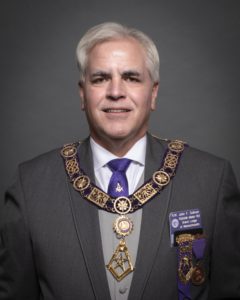


George Washington's General: John Sullivan (Posted 1/14/2015)
 From Valley Forge to Crossing the Delaware, every American knows about George Washington and the famous role he played during the Revolutionary War. While General Washington was the keystone of the War for American Independence, he had scores of men commanding under him. On January 23, 1795, one of his top generals passed away at his home in Durham, New Hampshire. Major General John Sullivan died a decorated commander and Past Grand Master.
From Valley Forge to Crossing the Delaware, every American knows about George Washington and the famous role he played during the Revolutionary War. While General Washington was the keystone of the War for American Independence, he had scores of men commanding under him. On January 23, 1795, one of his top generals passed away at his home in Durham, New Hampshire. Major General John Sullivan died a decorated commander and Past Grand Master.
 From Valley Forge to Crossing the Delaware, every American knows about George Washington and the famous role he played during the Revolutionary War. While General Washington was the keystone of the War for American Independence, he had scores of men commanding under him. On January 23, 1795, one of his top generals passed away at his home in Durham, New Hampshire. Major General John Sullivan died a decorated commander and Past Grand Master.
From Valley Forge to Crossing the Delaware, every American knows about George Washington and the famous role he played during the Revolutionary War. While General Washington was the keystone of the War for American Independence, he had scores of men commanding under him. On January 23, 1795, one of his top generals passed away at his home in Durham, New Hampshire. Major General John Sullivan died a decorated commander and Past Grand Master.
John Sullivan was born on February 17, 1740 in Somersworth, New Hampshire. He grew up to become a lawyer in Durham by 1763. He spent the beginning of his life there with his wife Lydia and six children. It was during his practice that he became close friends with the governor of New Hampshire, John Wentworth, and grew his interest in the friction between Britain and her colonies. John would become one of New Hampshire’s delegates to the First and Second Continental Congress. During the Second Continental Congress, John Sullivan was appointed as a brigadier general under George Washington.
Under Washington’s direction, Gen. Sullivan led several campaigns and assignments during the course of the war. After being sent to Quebec to attempt an invasion into Canada, Sullivan rejoined Washington for the defense of Long Island in 1776. Despite John’s noted heroics, he was captured by Hessian soldiers. He was later released in a prisoner exchange. After his return to continental forces, Sullivan made a name for himself in New Jersey, Pennsylvania and Rhode Island. His heroics at the Battle of Trenton secured his name for the main road of Ewing Township, New Jersey as “Sullivan Way.” His final campaign was Sullivan’s Expedition in 1779, where he used scorched earth tactics to destroy the crops and homes of encamped British and Iroquois troops. His final campaign was a success and the path he created in the Pocono Mountains was later named Sullivan’s Trail. He would retire to his estate in Durham, NH.
Before becoming involved in colonial politics, John Sullivan joined St. John’s Lodge in Portsmouth, NH. On July 8, 1789, Gen. Sullivan was elected as the first Grand Master of the newly constituted Grand Lodge of New Hampshire. He held his first official communication on July 16, 1789. A single snag was discovered after his election. Due to his involvement in Continental Congress and the war effort, John had never had the time to sit in the east of St. John’s Lodge. Once the faux pas had been realized, his mother lodge elected and installed him as Worshipful Master on April 8, 1790. He subsequently became Grand Master and finished his term.
John Sullivan is not the name that first comes to mind when the Revolutionary War is brought up, but that does not detract from the important role he played. Gen. Sullivan displayed courage and leadership throughout his campaigns. He has been regarded as one of the most important generals in the Continental Army. John Sullivan lived a long and impactful life for both man and masonry until his passing on this day in 1795.
webmaster@scottishriteboston.org | All Rights Reserved
The Bodies of the Scottish Rite, sitting in the Valley of Boston, Commonwealth of Massachusetts, acknowledge and yield allegiance to the Supreme Council, 33°, of the Ancient Accepted Scottish Rite of Freemasonry for the Northern Masonic Jurisdiction of the United States of America, whose Grand East is in Lexington, Massachusetts.



